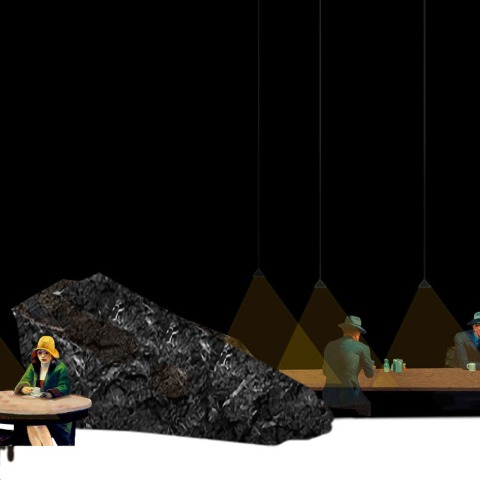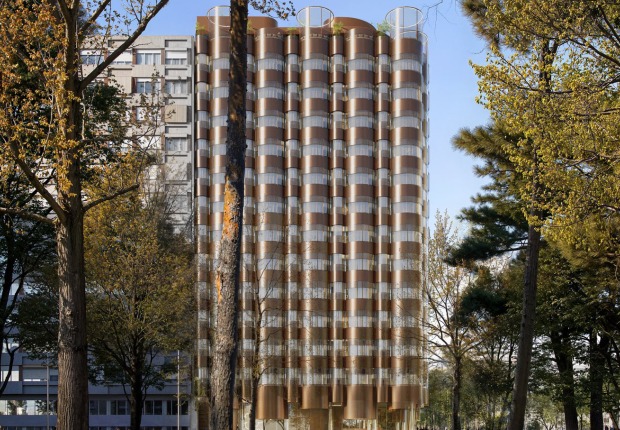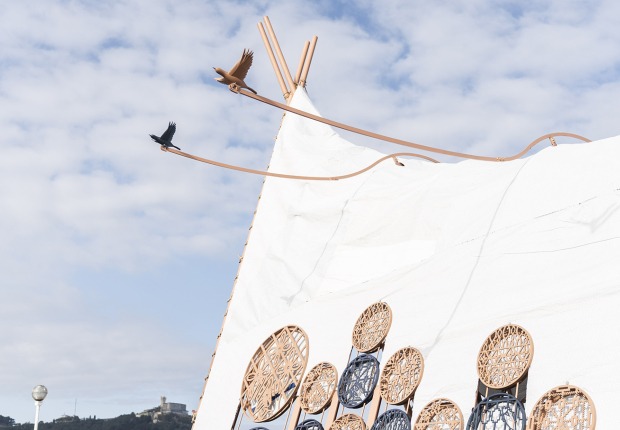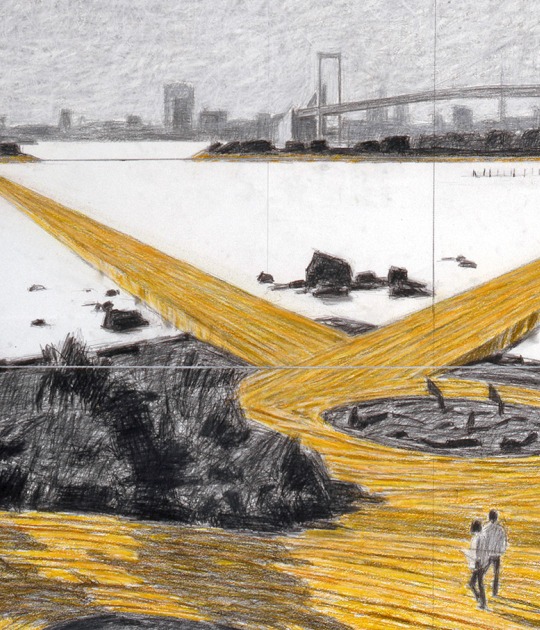This small space responds to its own logic since it presents the viewer with a series of tensions that have to be resolved by the visitor. This is because the elements are arranged in such a way that an internal path is generated. In this way, physical experimentation and a unique and unique interaction are allowed. All this is immense in the natural but under the condition of the artificial.
Description of project by Burgos & Garrido Arquitectos
The extracted
It is the fundamental component of a nearby landscape that we move to this interior. However, this set of rocks was no longer part of the landscape as we intuitively imagined it.
The pieces are part of the discard deposit of a quarry, so, despite the fact that we evoke the mountain or the primitive origin of the stone, we do not lose sight of this condition. We understand that this rescue somehow repairs its condition as a discarded element, almost a ruin, which despite everything retains the quality of the imposing of the raw natural world. In this way, we vindicate the idea of permanence that comes with rock.
Recovering the material from its abandonment gives it an unexpected new dimension. It also retains in this transit a certain beauty and a remaining purpose. We turn it into a kind of objective document of nature and at the same time, it contains something of abstraction of nature itself.
Built it
The installation dispenses with architecture, but builds a space. The set of rocks creates an unusual and ephemeral topography, which however is exposed almost like a monument to disappearance. His presence in the place activates the memory of another landscape. One that we really do not know, but we are able to evoke it.
This small territory of fiction moves from the massive to the sculptural or the poetic and refers us to the idea of the classic or the primitive. It is a fleeting landscape and in a few days it will be dismantled, but it is nevertheless anchored to the stone's ability to transcend and invites the visitor to transcend and apply a certain perspective on their relationship with nature.
The set responds to its own logic, presenting certain tensions, intended to be resolved or explored by the passerby. The arrangement of its elements allows an interior tour, delving into physical experimentation, immersing oneself in the materiality of the natural under an artificial atmosphere.
The transited
The transited passage through this landscape reveals the romantic magnetism of the mountain. The proximity and the scale of the rocks allow an approach that allows a careful and perhaps more private observation, which attracts the touch and allows measuring or comforting oneself with the stone.
The feeling of the mountain is sought as an almost subversive experience, considering the theatricality of the environment. It is the confirmation of the power of nature. Even when it is part of an ephemeral fiction, it retains its imposing character and retains its characteristic of being a place to go and explore, even when manipulated, displaced, and recomposed. This landscape introduces the passer-by into a journey through spatial situations that are intuitively incompatible. From the artificial, it directs the gaze to the beauty of the natural through the exhibition of the representative elements of its original composition.
The stony
The incorporation of a high-tech stone material closes the speech of the installation. Having proposed a scene that delves into the evocative power of stone in its raw and natural state, we find the replica in another element, which accommodates the most living spaces in the room, and is the reverse of this idea.
A deeply industrial product, it contains everything that belongs to the stony. It is formed in extremely controlled and precise conditions, but equivalent to the metamorphic process that would occur in nature to obtain the material that we are rescuing. The technology preserves and underlines some characteristics of its common nature, such as robustness or durability, and adds new ones, such as pure geometry, delicate textures, brightness, and color precision.
We find in these pieces, only possible through the application of technology with almost unlimited capacity, the same desire for transcendence and intensity that the primary rock transmits to us, at the center of this reflection.
































